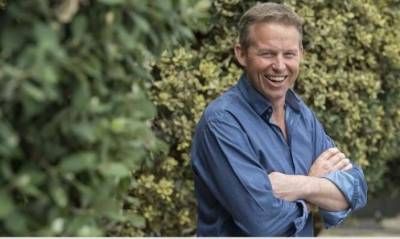
Organic dairy farmer Wil Armitage made his name in the Holstein scene winning showmanship championships at All-Britain, Madison and Toronto Winter Fairs, before becoming herd manager for Peter Dixon-Smith at Keythorpe Lakes Farm in Leicestershire.
Under his tenure, the former Lyons pedigree herd became the highest-yielding herd in the UK, producing 12,000 litres at a cell count of 93, and went on to win the coveted NMR RABDF Gold Cup award.
The sale of the Lyons herd and Peter Dixon-Smith’s retirement in 2003 paved the way for a complete evolution, starting with the Keythorpe Farm partnership moving to block calving and then becoming organic.
Since then, Wil’s business has expanded to milking 900 cows across three farms under various agreements.
Breeding
Holstein still makes up the mainstay of the herds – albeit a different type of animal that is capable of efficiently converting grass into milk.
Bulls are selected for Predicting Transmitting Ability (PTA) of +10 for fertility, alongside high milk solids production. They must also be negative for stature and somatic cell count and produce less than 500kg of milk. “You end up with a capacious cow without being 6ft tall. The Holstein breed has a massive genetic pool, and the genetics are there to breed black and white cows to do what you want,” he explains.
Crop rotation
Soil health has been a fundamental focus in helping him successfully grow quality forage with low inputs. On the grazing platform, grass and white clover leys grew 11t DM/ha this season.
The cropping policy avoids bare soils.
Wil’s mantra is ‘if it is green, it is sequestering carbon’.
Fodder beet is sown after third-year red clover and Italian ryegrass once third-cut silage has been taken. A green cover crop of oats, vetch, and fodder radish is planted and ploughed in as green manure.
Beet is lifted in October and fed three weeks prior to service in their autumn-calving herd in November. Fodder beet is then followed by a wholecrop of oats, barley, peas, beans, and vetch.
Wholecrop is undersown with Italian ryegrass, red clover and lucerne to provide high plant density and diversity.
Soil health and nutrition
Albrecht soil analysis is used to establish base saturation levels – the total amount of nutrients available in the soil.
“There are tonnes of P&K in our soils and applying more very often shuts down soils. NPK system is a very blunt instrument,” says Wil.
Where needed, nutrients are delivered in the form of farmyard manure (FYM) and slurry.
FYM is applied before fodder beet with soils ploughed.
“Ploughing isn’t an issue on our heavy soils; sometimes we need to plough to get air in our soils at a depth of 8-10cm,” says Wil. Although green manure or FYM is critical to feed soil microbes, he adds.
“We are high calcium soils, so we do require additional magnesium. There are times when the grass goes light green and that’s a sign that we need to apply foliar feed,” adds Wil, who says this tends to happen after the third or fourth grazing round with the plant unable to put enough energy back into the soil because it is growing so fast.
Epsom salts and liquid seaweed alongside sulphur and molasses are applied as a foliar feed with molasses acting as a good carbon source which is vital for good soil health.
Wil will be talking at the British Cattle Breeder’s Conference on Wednesday 24 January where he will discuss how soil health and breed selection are fundamental to a profitable and sustainable dairy system.